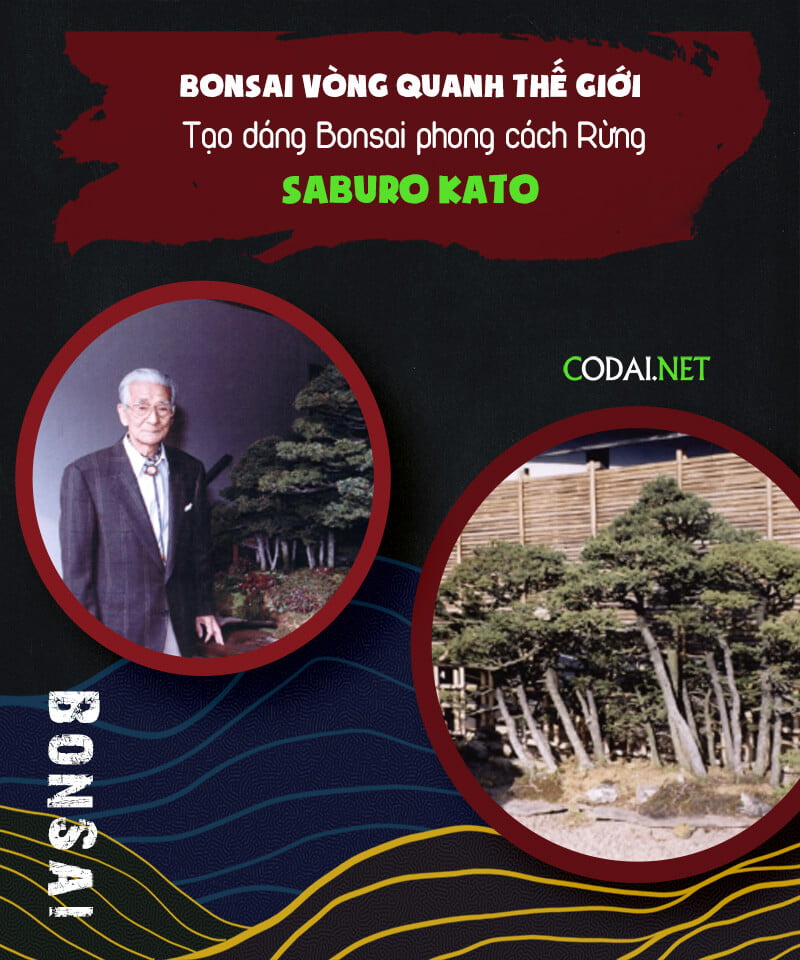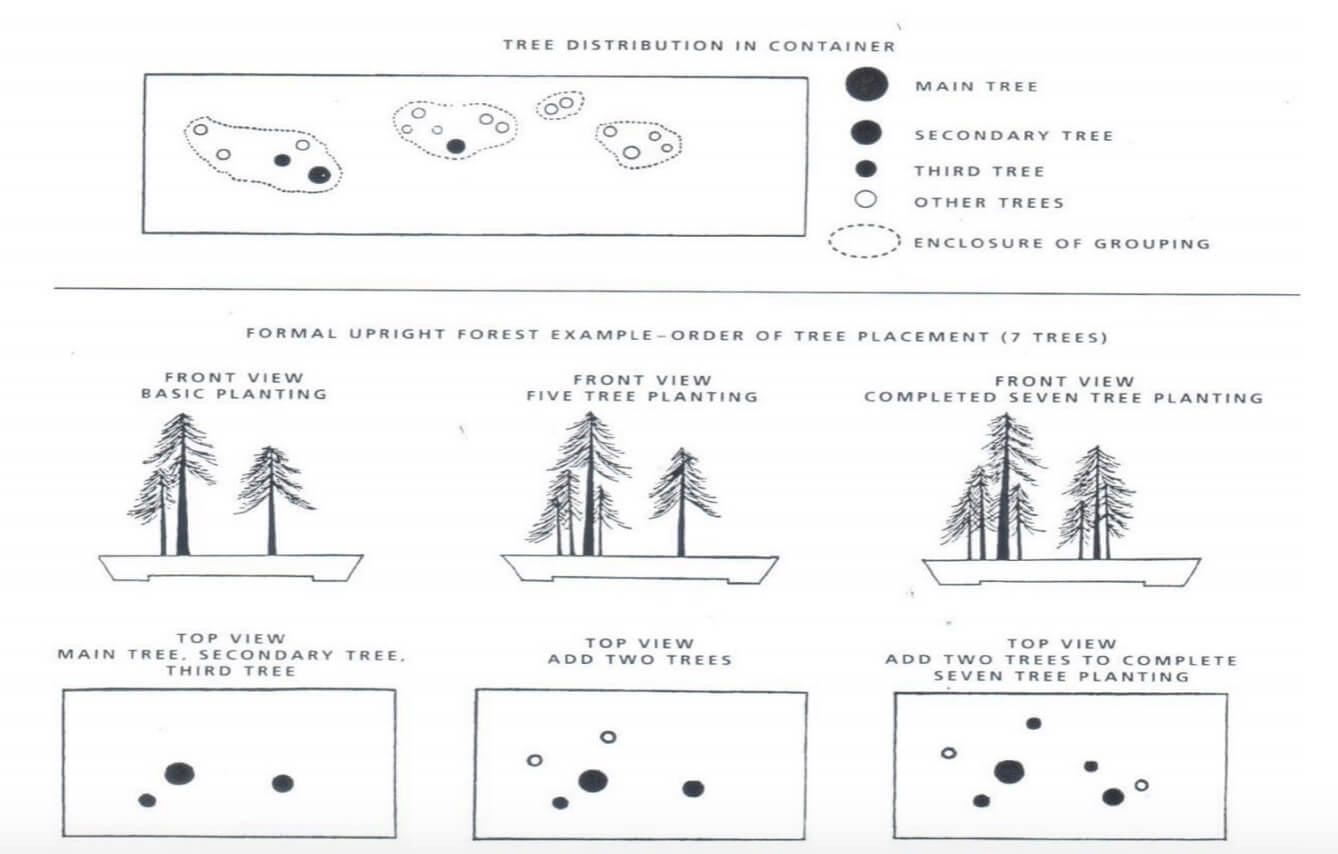Bonsai, Bonsai Focus Magazine, Chia sẻ kinh nghiệm, Người nổi tiếng
Tạo dáng Bonsai phong cách Rừng cùng Cây Vân Sam Ezo (ezo spruce, Pice jezoeni) – Saburo Kato
Nguồn: Tạp chí Bonsai Focus English Edition T7/T8 2019
Dịch và biên tập: Dũng Cá Xinh (11/08/2021)
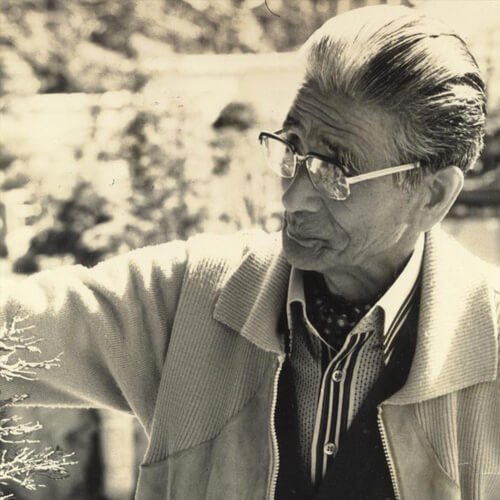
Cố bậc thầy Saburo Kato (1915-2008) là chủ sở hữu thế hệ thứ 3 của vườn Mansei-en, đồng thời là cố chủ tịch World Bonsai Friendship Federation
English
CREATING FOREST BONSAI: A RELATIVELY EASY & INEXPENSIVE WAY TO A LIFETIME OF BONSAI ENJOYMENT
Our Co-President, Felix Laughlin, gave this presentation on November 10, 2019 at the Blue Ridge Bonsai Society in Asheville, NC, as part of their regular education program for club members. We wanted to share it with you.
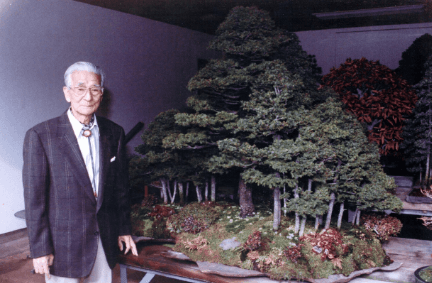
Laughlin created this presentation in order to do two things:
- 1) To show how easy and relatively quick it is to create a forest bonsai using young seedlings.
- 2) To raise awareness around the late Saburo Kato, a Japanese bonsai master who made possible the 1976 Bicentennial bonsai gift that lead to the birth of the National Bonsai & Penjing Museum. Throughout the presentation, Laughlin cites Kato’s classic book on forest bonsai plantings, Forest, Rock Planting & Ezo Spruce (Translated into English and published by NBF – Available for purchase here).
The seedlings Laughlin used were Stewartia seedlings grown and donated for the demonstration by Sage Smith. As you will see from the photographs, his fellow club members were a big help with every stage of the process, from preparing the young trees to tying them down in their proper place in the container.
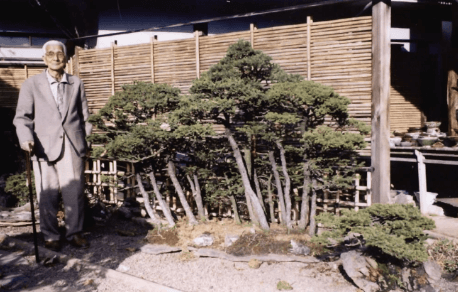
Enjoy!
The Remotest Hill
- The forest planting shown on the cover of SaburoKato’s book is one of his most well-known masterpieces called”The Remotest Hill.”
- All trees are EzoSpruce (Picieaglehnii) collected by Mr. Kato in the 1930s from Kunashir Island, which is no longer a part of Japan. The main trunk is about 250 years old!
- Mr. Kato worked on this forest for three years.
The Deeper Gift of Bonsai
The Japanese term “bonsai no kokoro” means the spirit of bonsai. SaburoKato, who died at age 93 in 2008,was the Japanese bonsai master who probably explained this best:
“By nurturing a bonsai, we learn the essence anddignity of life. In return for our care, the bonsaiportrays the ultimate beauty of nature, and our loveof the bonsai expands to encompass nature in all itsmany forms.”
What is Needed for a Forest Bonsai?
- “The materials for forest bonsai plantings do not need to be aged trees; instead, with enough effort, you can create something of beauty using seedlings, grafts, or layered materials.”
- “Even lonely looking trees with just a trunk and a deficiency of branches can, properly arranged, be made into wonderful works of admiration.”
Peace and Happiness
- “The greatest enjoyment of bonsai is to be able to create something by yourself and to nurture it with love and affection.”
- “A single [forest bonsai], made by yourself, can be sufficient to sooth the soul through the enjoyment of the morning and afternoon views , and your love of bonsai will deepen even more.”
- “This is the beginning of peace and happiness.”
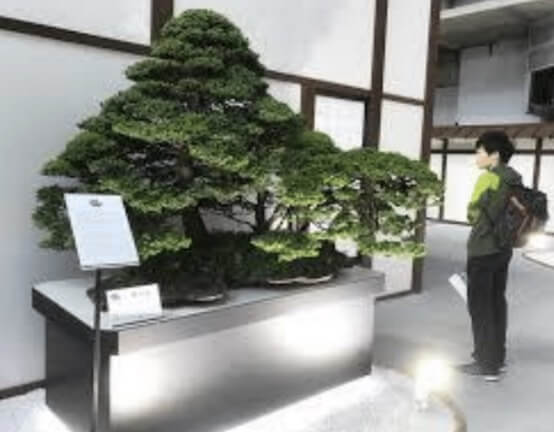
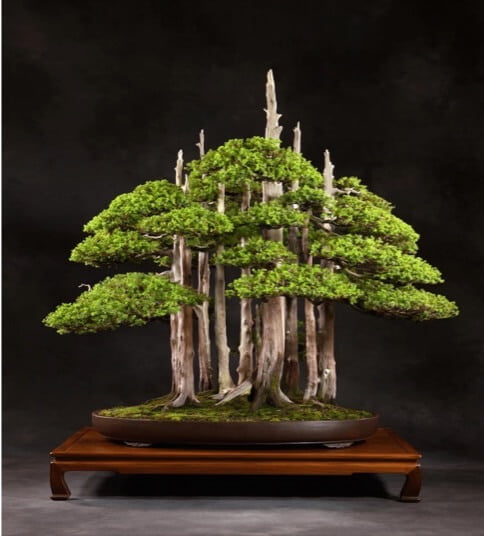
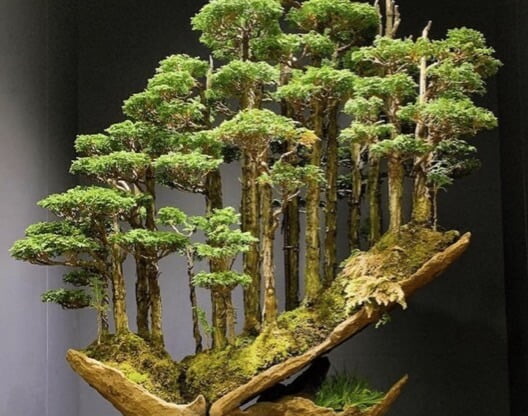
Basic Rules for Forest Plantings
- Use uneven numbers of trees (unless more than 11).
- Generally use trees of same species.
- Use trees with varying trunk diameters
- Determine Number 1, 2 and 3 trees. These will be planted first.
Basic Rules for Forest Plantings (cont’d)
- Lay out all trees on a table in order of size.
- Prune to make sure each tree’s height is proportionateto its trunk diameter.
- For formal upright forest, wire any trees needing to be straightened.
- When planting, try to avoid planting 3 trees in a straight line.
Kato’s Basic Forest Plan
Ways to Secure the Trees to the Pot or Slab
- 1. Wire from drainage holes (or drill new holes as needed in a training pot)
- 2. Wire using chopstick frame
- 3. Wire using the plastic webbed bottom of a nursery tray
- 4. Use “U”-shaped wire “hair” pins
Preparing to Plant using Chopstick
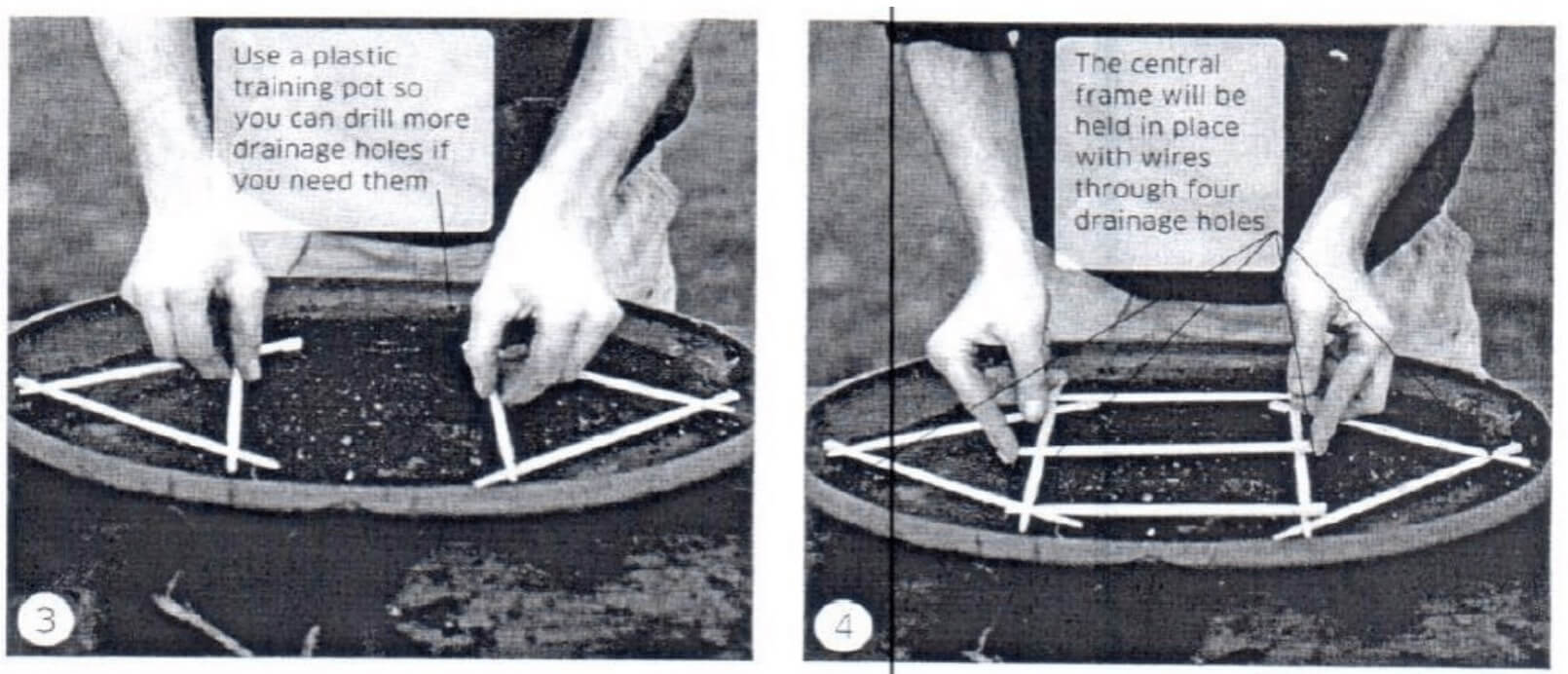
We Will Follow Kato’s Plan for a Deciduous Forest
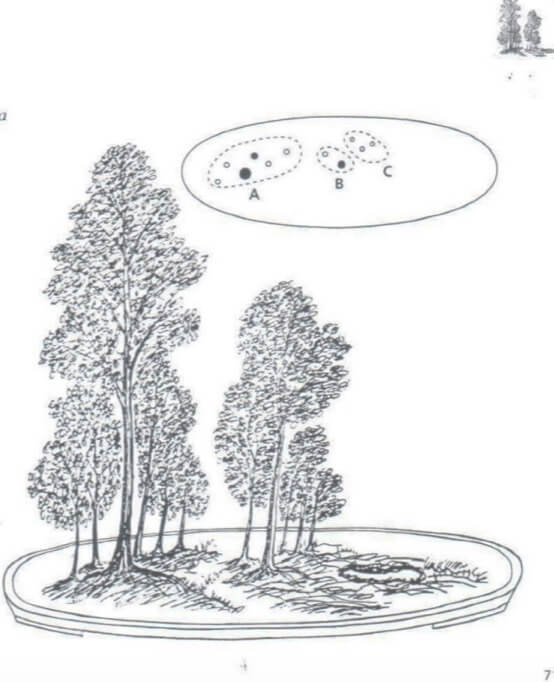
Chopstick Frame for Tie-Down Wire
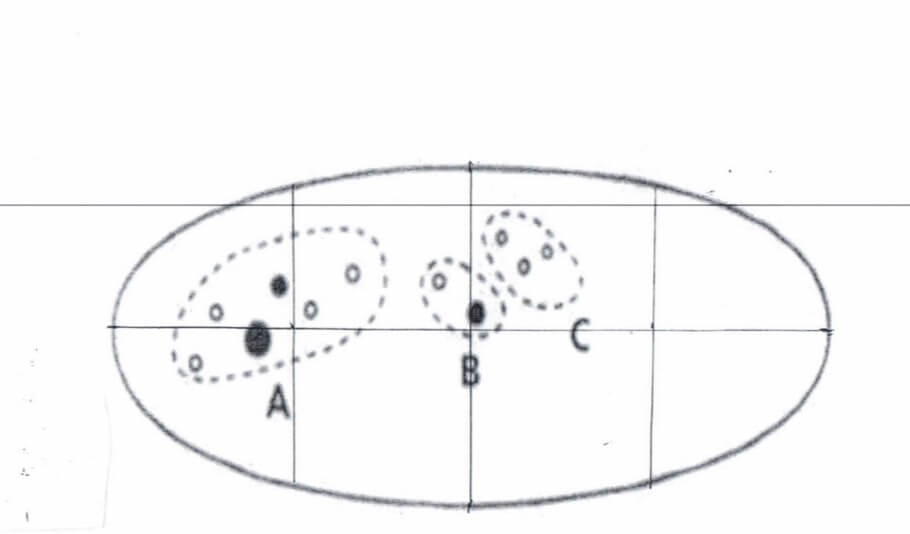
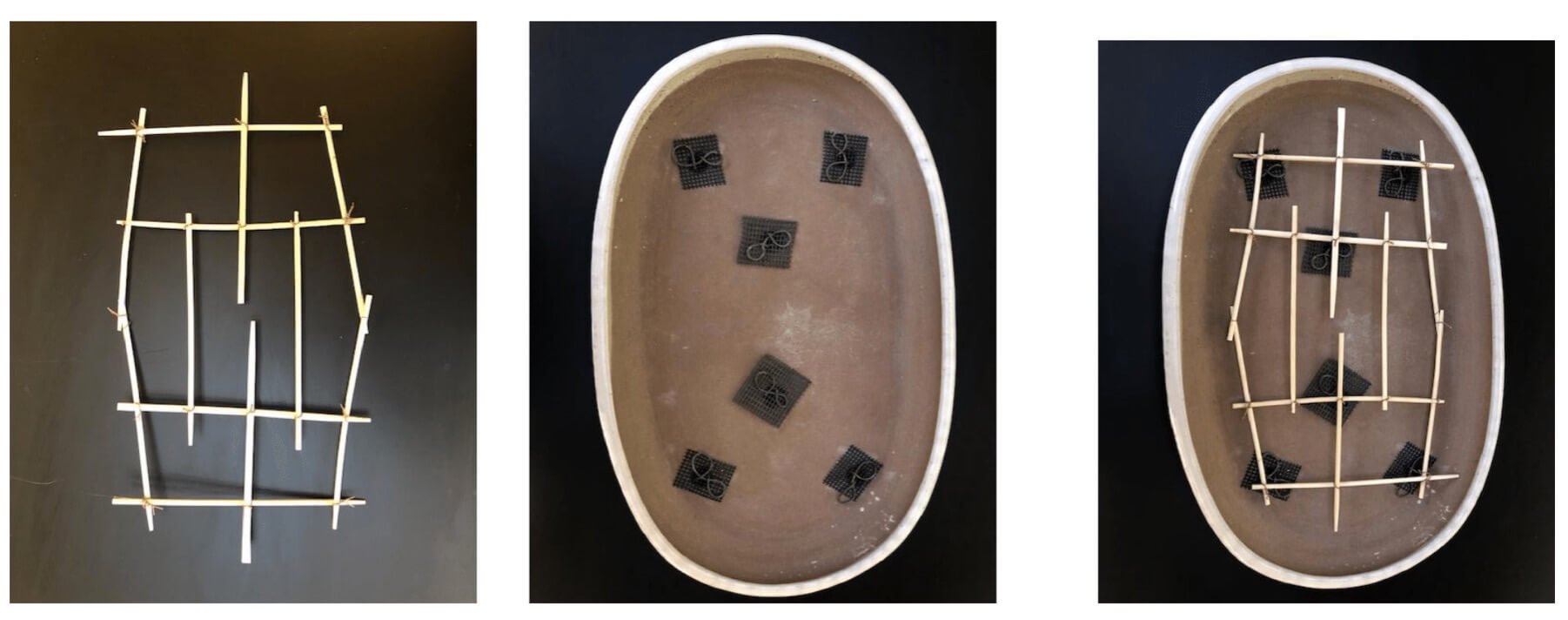
Adding Tie-DownWires
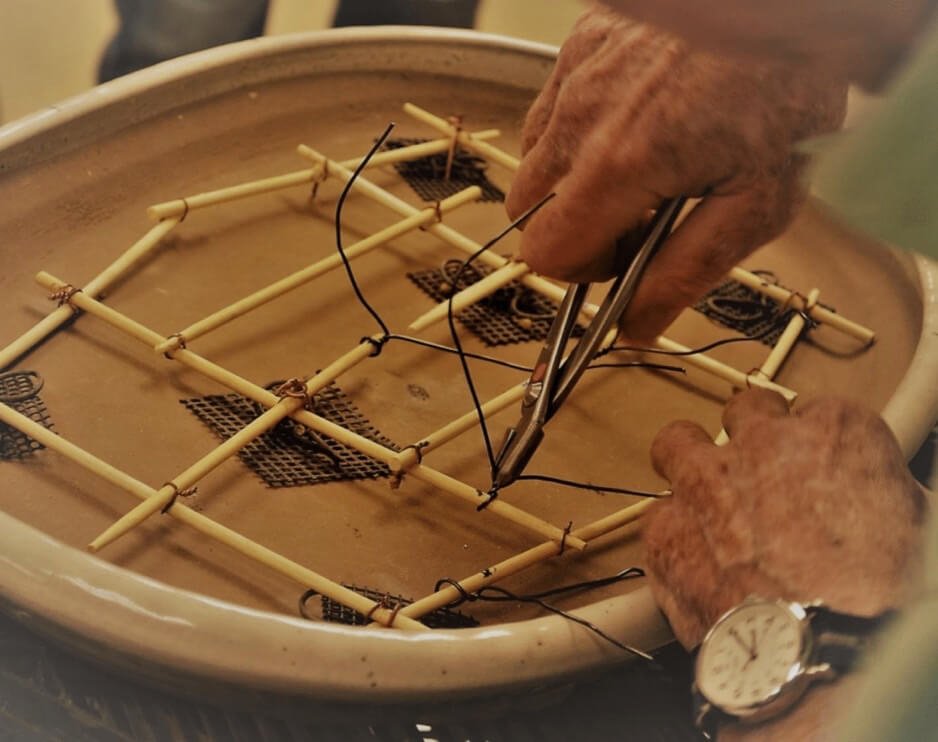
Adding base layer of Soil Mix
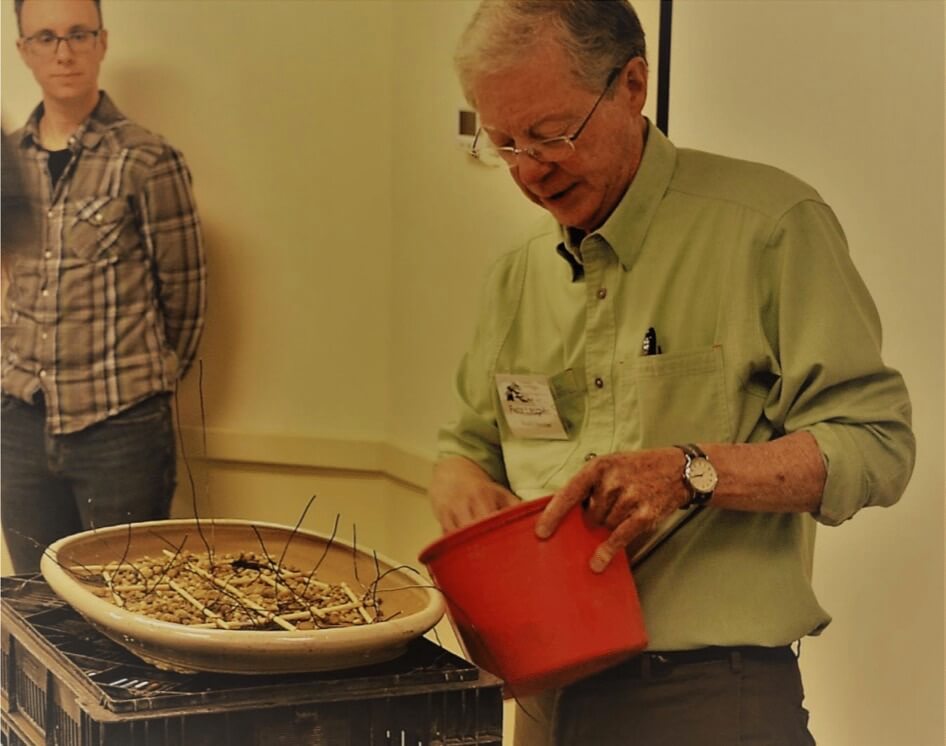
Stewartia Monadelpha
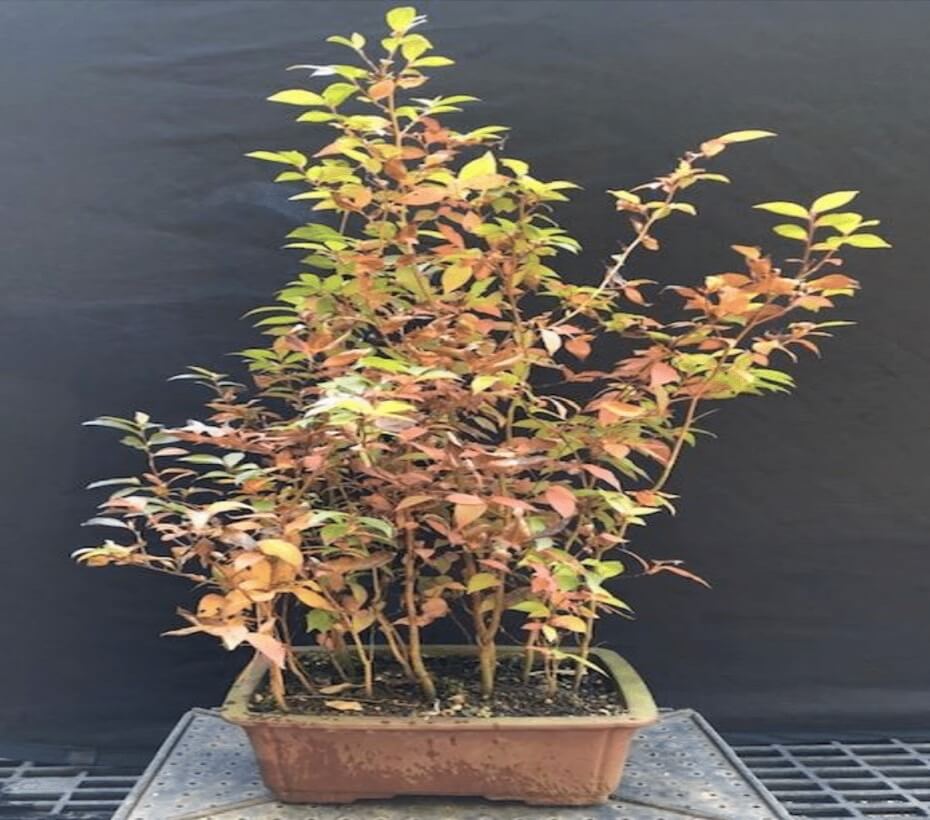
Reducing Root Pad
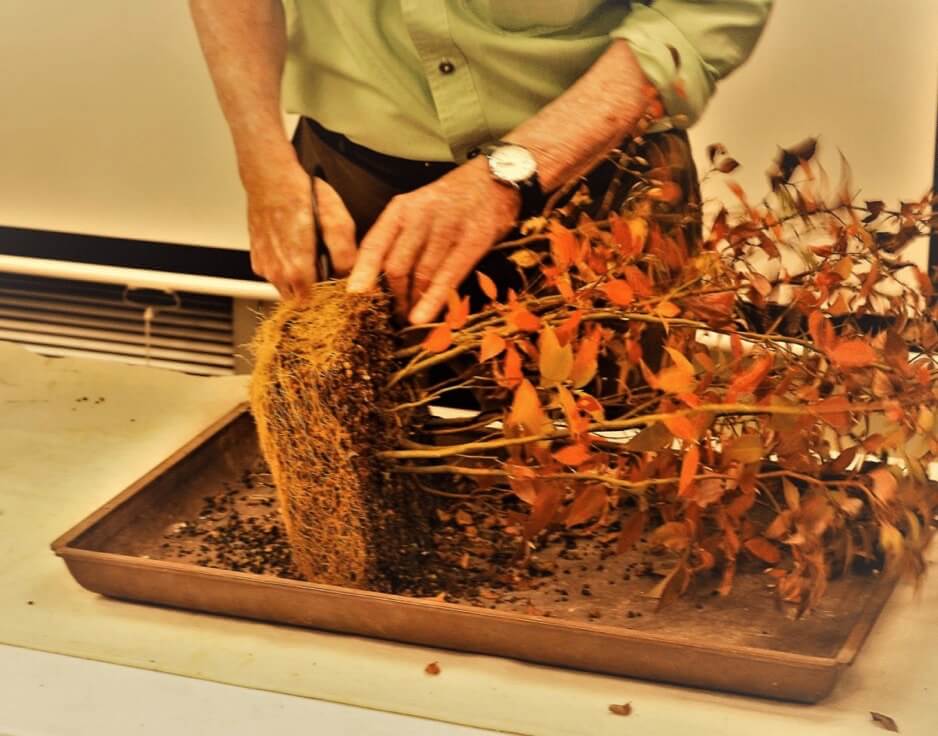
Separating Trees
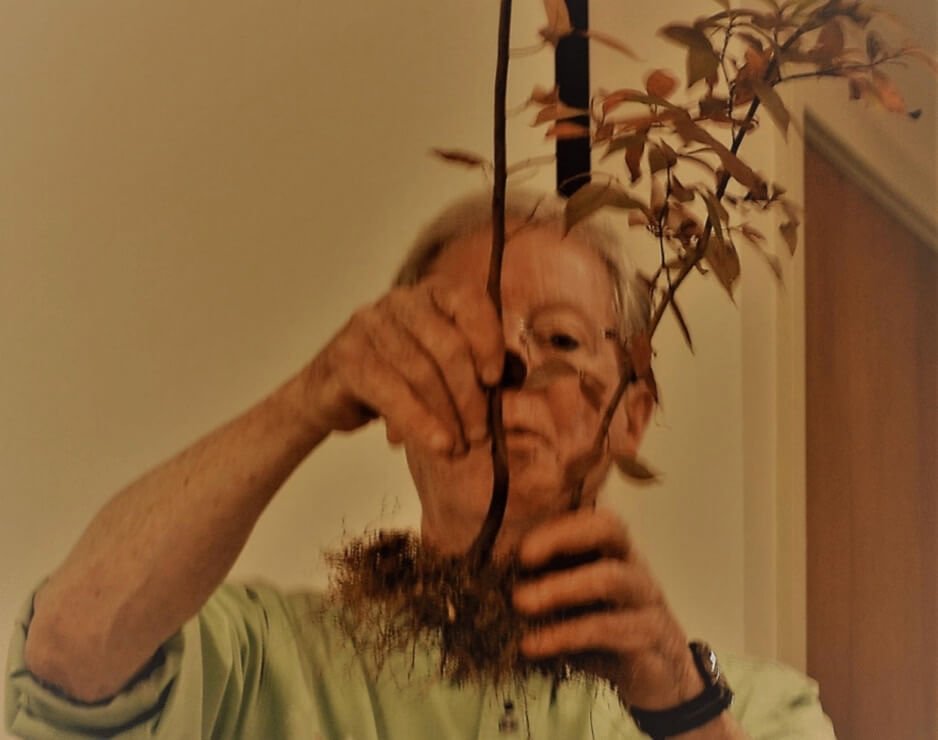
Organizing Trees
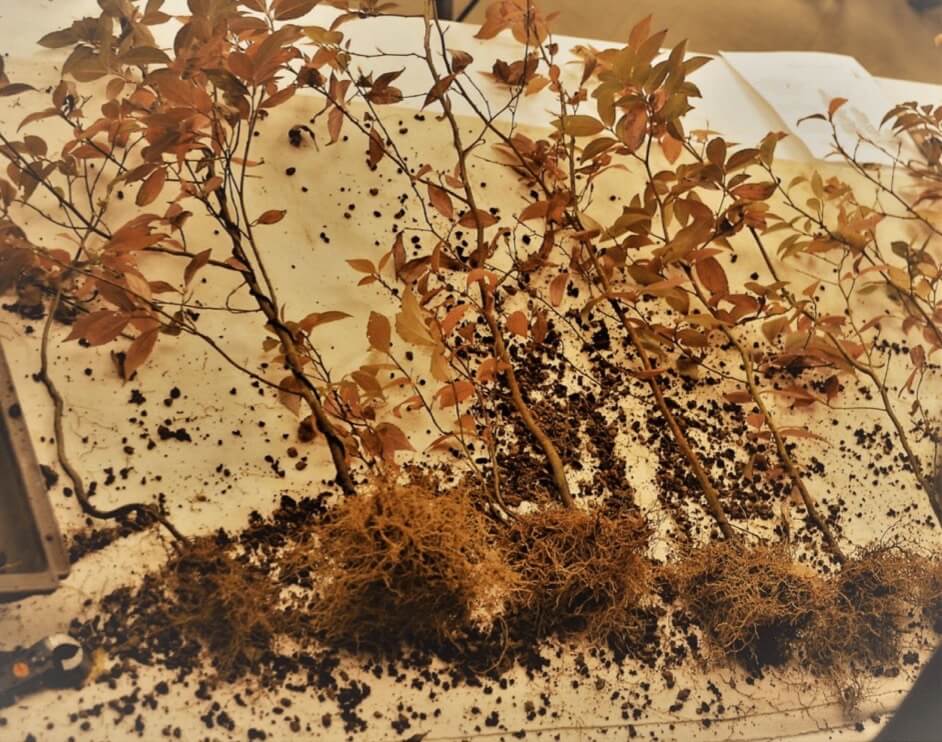
Initial Planting of Trees
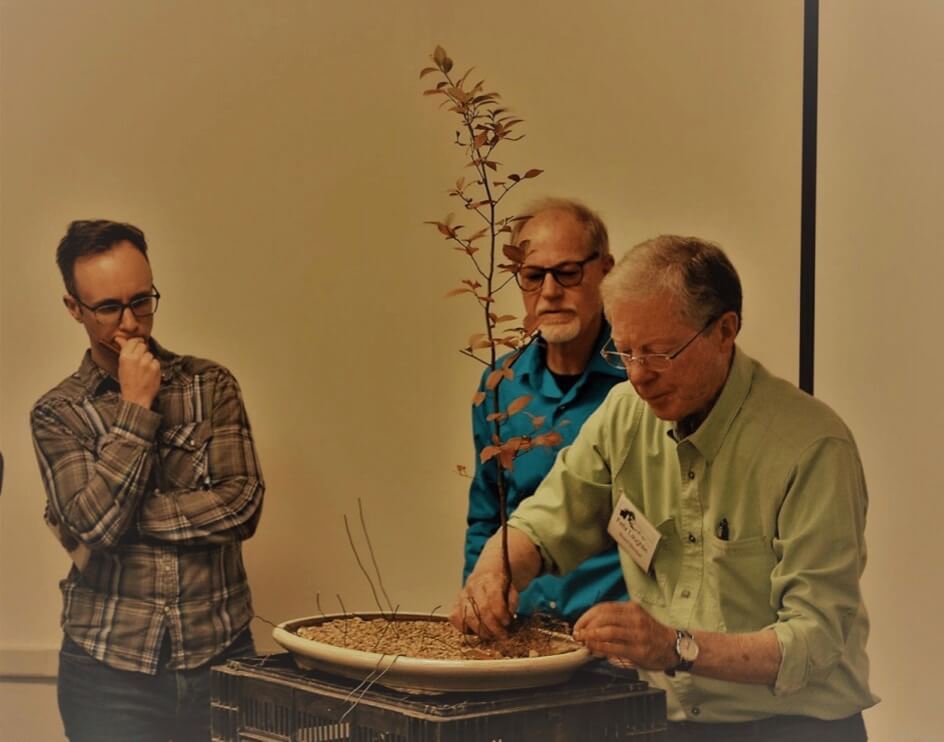
Adding Rest of the Trees
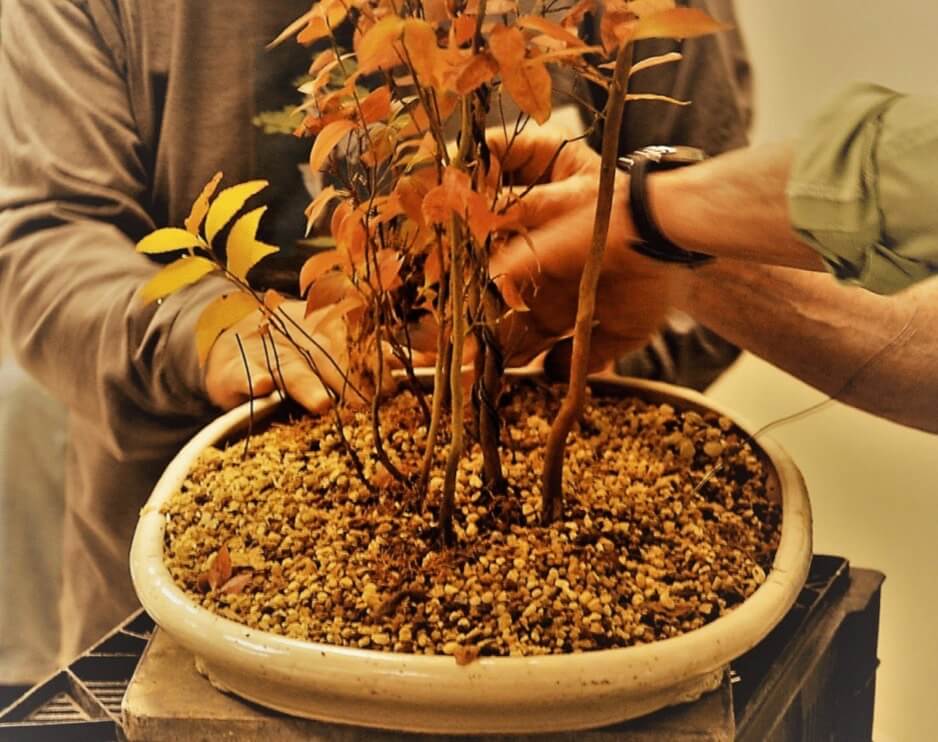
Settling Soil Mix
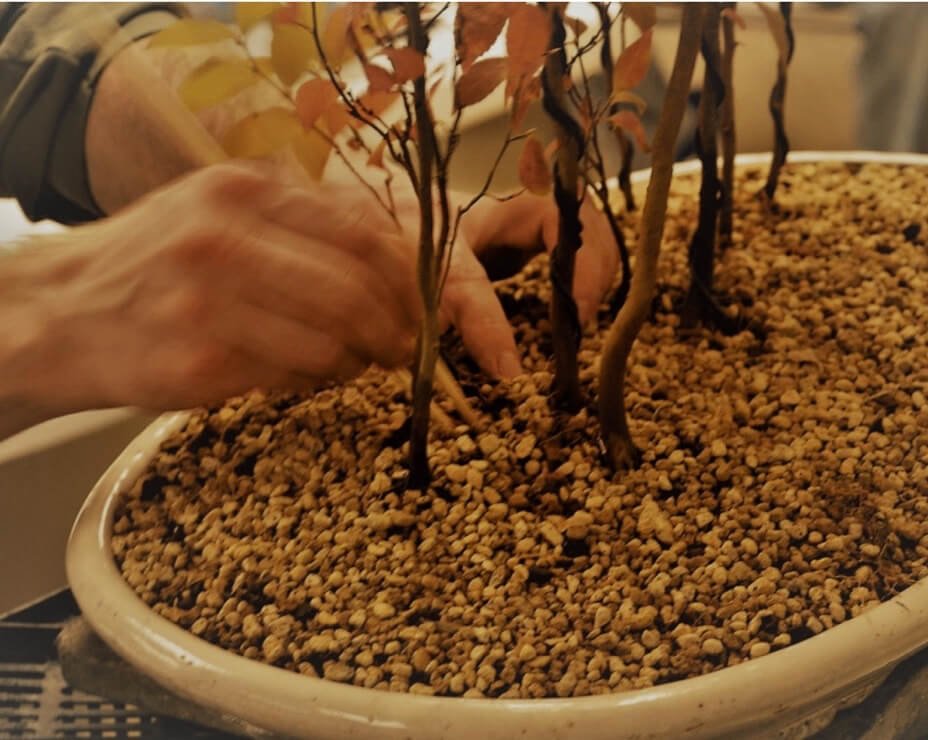
Finishing Touch
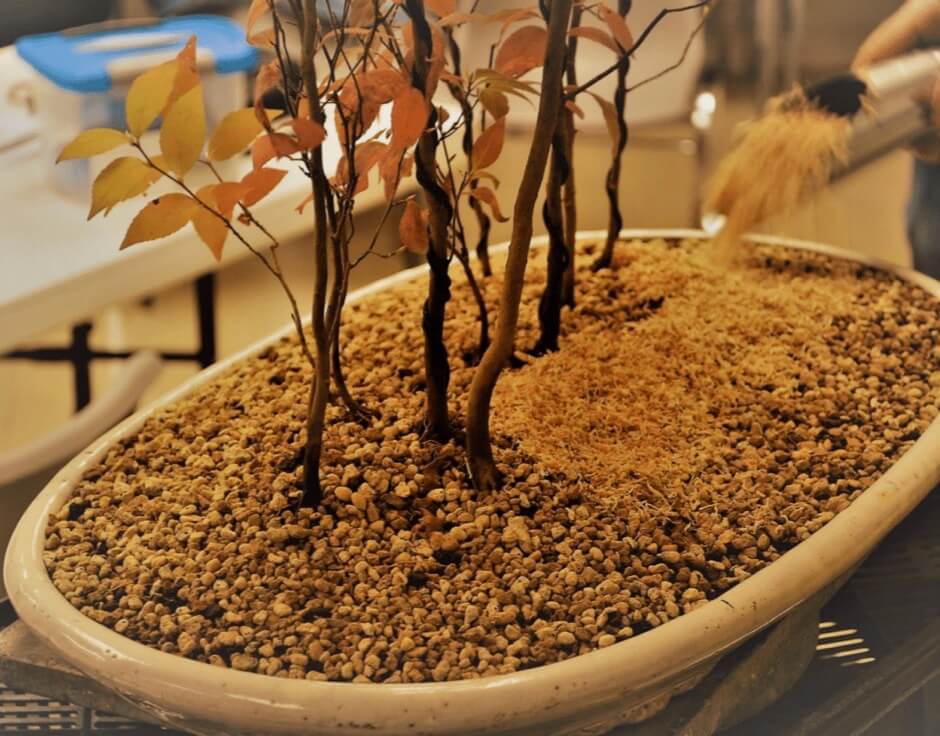
Ready for First Watering
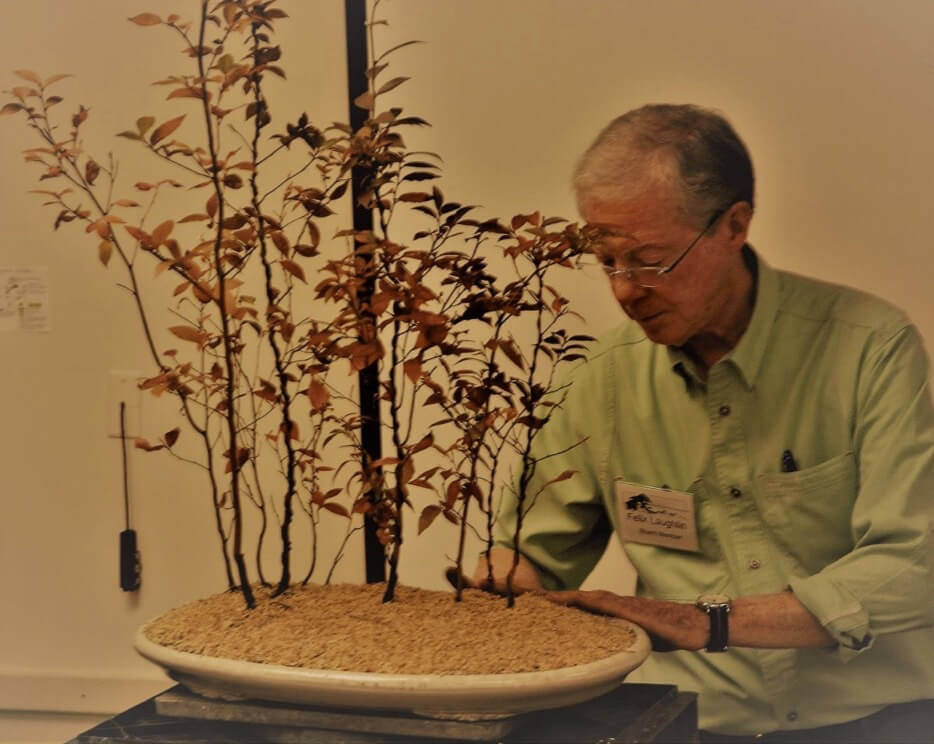
The End: Waiting for Spring!!!
Tiếng Việt
TẠO TÁC PHẨM BONSAI PHONG CÁCH RỪNG: MỘT CÁCH ÍT TỐN KÉM VÀ TƯƠNG ĐỐI DỄ DÀNG ĐỂ TẬN HƯỞNG BONSAI SUỐT ĐỜI
Laughlin đã tạo bản trình bày này để thực hiện hai việc:

- 1. Chia sẻ việc tạo một tác phẩm Bonsai phong cách rừng bằng cách sử dụng cây con một cách dễ dàng và tương đối nhanh chóng như thế nào.
- 2. Nâng cao nhận thức về cố Saburo Kato, một bậc thầy Bonsai Nhật Bản, người đã đóng góp vào gói quà tặng Bonsai nhân sự kiện Bicentennial năm 1976, tiền đề dẫn đến sự ra đời của Bảo tàng Bonsai & Hòn non bộ Quốc gia (National Bonsai & Penjing Museum). Xuyên suốt bài thuyết trình, Laughlin trích dẫn cuốn sách kinh điển của Kato về trồng Bonsai phong cách rừng: Forest, Rock Planting & Ezo Spruce.
Cây mà Laughlin sử dụng là cây con Stewartia (cây Chiên Trầm) do Sage Smith trồng và tặng cho bài trình diễn. Như bạn sẽ thấy từ các bức ảnh, các thành viên câu lạc bộ của anh ấy đã giúp đỡ rất nhiều trong mọi giai đoạn của quá trình, từ chuẩn bị các cây non đến buộc chúng vào đúng vị trí trong chậu.

Cùng xem nhé!
The Remotest Hill (Ngọn Đồi Xa Xăm Nhất)
- Tác phẩm Bonsai phong cách rừng được thể hiện trên trang bìa cuốn sách của Saburo Kato là một trong những kiệt tác nổi tiếng nhất của ông có tên là “The Remotest Hill”. (Ngọn Đồi Xa Xăm Nhất)
- Tất cả các cây đều là Ezo Spruce (Cây Vân Sam Ezo, Piciea glehnii) được ông Kato thu thập vào những năm 1930 từ đảo Kunashir, nơi không còn là một phần của Nhật Bản. Thân cây chính vào khoảng 250 năm tuổi!
- Ông Kato đã làm việc với tác phẩm rừng này trong ba năm.
Món quà sâu sắc hơn từ Bonsai
- Thuật ngữ tiếng Nhật “bonsai no kokoro” có nghĩa là Tinh thần của Bonsai. Saburo Kato, qua đời ở tuổi 93 vào năm 2008, là bậc thầy cây cảnh Nhật Bản có lẽ đã giải thích rõ nhất điều này: “Bằng cách nuôi dưỡng một cây Bonsai, chúng ta học được bản chất và phẩm giá của cuộc sống. Để đáp lại sự chăm sóc của chúng ta, Bonsai thể hiện vẻ đẹp tối thượng của thiên nhiên và tình yêu của chúng ta đối với Bonsai để bao trùm thiên nhiên dưới mọi hình thức của nó. ”
Cần gì để làm một tác phẩm Bonsai phong cách Rừng?
- “Nguyên liệu trồng Bonsai phong cách rừng không nhất thiết phải là cây lâu năm; thay vào đó, với đủ nỗ lực, bạn có thể tạo ra thứ gì đó đẹp đẽ bằng cách sử dụng cây con, cành giâm hoặc cành chiết.”
- “Ngay cả những cái cây trông cô đơn chỉ với một thân cây và thiếu nhánh cũng có thể được sắp xếp hợp lý và trở thành những tác phẩm tuyệt vời đáng ngưỡng mộ.”
Hoà Bình và Hạnh Phúc
- “Thú vui lớn nhất của Bonsai là có thể tự mình tạo ra một thứ gì đó và nuôi dưỡng nó bằng tình yêu và tình cảm.”
- “Một tác phẩm phong cách rừng do chính bạn làm ra có thể đủ để xoa dịu tâm hồn thông qua việc tận hưởng khung cảnh buổi sáng và buổi chiều, để rồi tình yêu Bonsai của bạn sẽ sâu sắc hơn nữa.”
- “Đây là sự khởi đầu của hòa bình và hạnh phúc.”



Những nguyên tắc cơ bản của phong cách Rừng
- Sử dụng số lượng cây không đồng đều (trừ khi nhiều hơn 11).
- Nói chung là sử dụng các cây cùng loài.
- Sử dụng các cây có đường kính thân khác nhau
- Xác định cây số 1, 2 và 3. Những cây này sẽ được trồng trước.
- Bố trí tất cả các cây trên bàn theo thứ tự kích thước.
- Tỉa cành để đảm bảo chiều cao của mỗi cây tương xứng với đường kính thân của nó.
- Đối với rừng thẳng đứng có dáng trực, hãy đi dây bất cứ cây nào cần được làm thẳng.
- Khi trồng, bạn cố gắng tránh trồng 3 cây trên một đường thẳng.
Kế hoạch Rừng đơn giả của Kato
Cách để cố định cây vào chậu hoăc khay
- 1. Đi dây từ các lỗ thoát nước (hoặc khoan các lỗ mới nếu cần)
- 2. Buộc dây sử dụng khung đũa
- 3. Dùng dây thép buộc từ đáy khay ươm cùng màng nhựa
- 4. Sử dụng ghim chữ U
Chuẩn bị trồng với các que đũa

Chúng ta sẽ theo hướng dẫn của Kato để tạo ra một khu rừng cây Rụng Lá

Khung đũa để buộc dây


Thêm dây nhôm chờ sẵn

Thêm lớp Giá thể (Soil Mix) nền

Japanese stewartia (Stewartia pseudocamellia, Cây Sa La, Natsutsubaki, Hoa Trà Mùa Hè)

Cắt bớt rễ

Tách cây

Sắp xếp cây

Trồng cây đầu tiên

Thêm các cây còn lại

Vun giá thể đất

Bước kết thúc

Chuẩn bị cho lần tưới nước đầu tiên

Kết thúc: Chờ đợi mùa xuân đến!!!!
